- Understanding Brand Protection
- What Is Brand Protection?
- The Evolution of Brand Protection in the Digital Era
- The Importance of Brand Protection
- Safeguarding Intellectual Property
- Enhancing Consumer Trust
- The Consequences of Counterfeiting and Brand Abuse
- Key Challenges in Brand Protection
- Counterfeit Products and Piracy
- Online Brand Impersonation
- Strategies for Effective Brand Protection
- Legal Frameworks and Trademarks
- Digital Brand Protection Solutions and Monitoring Tools
- Implementing Successful Brand Protection Solutions
- Best Practices for Brand Protection Strategies
- Measuring and Enhancing Brand Protection Efforts
In today’s fast-paced digital world, protecting your brand isn’t just an option—it’s essential. As you navigate through the vast digital landscape, your brand’s identity can be vulnerable to various threats, from intellectual property theft to reputation damage. Understanding the basics of brand protection can give you a crucial edge.
Advancements in brand protection technology are essential for combating brand abuse and safeguarding brand identity.
Why does brand protection matter more now than ever? With the rise of online platforms, your brand’s visibility has increased, but so has the risk of infringement and misuse. By securing your brand, you’re not only safeguarding your intellectual property but also building trust with your customers, which is invaluable.
Whether you’re a startup or an established business, taking proactive steps towards protecting your brand is a strategic move that can prevent potential legal battles and financial losses. Let’s jump into why brand protection should be at the forefront of your business strategy in the digital age.
Understanding Brand Protection
In the fast-paced digital world, understanding brand protection is crucial for maintaining the integrity and value of your business. Protecting a brand’s intellectual property is essential as it encompasses all measures taken to prevent unauthorized use, counterfeiting, or infringement of your brand identity.
What Is Brand Protection?
Brand protection is the process of safeguarding the intellectual property (IP) that defines a company’s brand identity from potential infringements or misuse. This involves securing trademarks, copyrights, and patents that provide essential legal protection for your brand elements such as logos, slogans, and product designs. Effective brand protection ensures that you maintain control over your brand’s representations in the market, preserving its authenticity and trustworthiness among consumers.
The Evolution of Brand Protection in the Digital Era
With the advent of digital technology, the tactics needed to protect brands have evolved considerably. Before the internet, brand protection primarily involved monitoring print media and conducting market surveys. But, the digital era has introduced complex challenges such as online counterfeiting, domain squatting, and unauthorized digital content usage.
Online counterfeiting and digital impersonation can severely harm a brand’s reputation. Proactive measures are crucial to protect a brand’s reputation, as failure to do so can lead to significant consumer trust issues and ultimately damage the brand’s standing in the market.
- Shift to Online Platforms: Brand owners now monitor a broader array of channels, including websites, e-commerce platforms, and social media, to detect IP infringements.
- Use of Technology: Advanced tools like digital watermarking and online brand protection software have become essential. These technologies help in identifying IP breaches and automating the enforcement process.
- Global Reach: Globalization coupled with e-commerce allows brands to reach international markets easily but also exposes them to increased risks of infringements across different jurisdictions, necessitating a global brand protection strategy.
These developments highlight why it’s imperative for businesses, especially in sectors with high visibility online, to continually adapt their brand protection strategies to address evolving digital threats effectively.
The Importance of Brand Protection
In modern digital era, brand protection plays a pivotal role in maintaining the integrity and value of your business. As the digital landscape expands, so do the opportunities for infringement and misuse of a brand’s intellectual property. Understanding the significance of defending your brand’s intellectual property is crucial in fostering a secure, trusted business environment.
Safeguarding Intellectual Property
Intellectual property (IP) serves as the cornerstone of your brand identity, encompassing trademarks, copyrights, and patents. It’s essential to rigorously protect your IP to prevent unauthorized use, which could dilute your brand’s value and competitive edge. Infringements can manifest in various forms, such as counterfeit products, unauthorized reselling, or patent theft. Proactive IP protection involves several strategies:
- Monitoring and Enforcement: Regularly monitor the market and online platforms for potential infringements of your IP. Use advanced tools and services that specialize in detecting IP violations.
- Legal Frameworks: Establish strong legal protections by registering your IP rights with relevant authorities. This registration grants you the legal backing to pursue violators and ensures robust legal protection against copyright infringement.
- Education and Awareness: Educate your partners and customers about the importance of IP rights. Awareness helps in building a respectful environment where third parties are less likely to infringe intentionally.
Embracing these protective measures ensures that your innovations and creative outputs are secure, reinforcing your market position and enhancing your brand’s longevity.
Enhancing Consumer Trust
Consumer trust is paramount in maintaining and expanding your customer base. Protecting your brand against counterfeit and piracy is critical in ensuring the brand’s reputation remains intact and that customers receive the value they expect. When customers are confident that they are purchasing genuine, quality products, their trust in a brand increases. Effective brand protection strategies convey to consumers that you are committed to maintaining the quality and authenticity of your offerings. Here’s how safeguarding your brand can boost consumer trust:
- Consistency in Quality: By preventing counterfeit products, you ensure that customers always receive the high-standard goods or services they associate with your brand.
- Transparency: Open communication about your brand protection practices can enhance consumer confidence. Let your customers know what steps you’re taking to combat fraud and maintain quality.
- Customer Feedback: Encourage and monitor customer feedback to quickly address any concerns related to counterfeit products or brand misuse. Responding proactively protects your brand’s reputation and bolsters consumer trust.
Implementing robust brand protection practices not only secures your intellectual property but also significantly contributes to building a loyal customer base. Your commitment to these efforts assures customers of your dedication to quality and authenticity, which is critical in the digital marketplace.
The Consequences of Counterfeiting and Brand Abuse
Counterfeiting and brand abuse can have severe consequences for brands, including financial losses, damage to reputation, and loss of customer trust. Counterfeiting is not just a black market venture but a serious business that can have far-reaching impacts. The sale of counterfeit products can lead to significant revenue loss, as customers unknowingly purchase fake products instead of genuine ones. This diversion of sales not only affects the bottom line but also undermines the brand’s market position.
Moreover, counterfeiting can severely damage a brand’s reputation. When customers encounter counterfeit products, they may associate the brand with low-quality or fake products, leading to a negative perception. This can be particularly damaging in industries where quality and authenticity are paramount, such as luxury goods, pharmaceuticals, and electronics.
Brand abuse also erodes customer trust. When customers feel that a brand is not doing enough to protect them from counterfeiters, their confidence in the brand diminishes. This loss of trust can result in a decline in sales and a loss of market share. Additionally, brand abuse can lead to legal consequences, as brands may be held liable for the sale of counterfeit products. This underscores the importance of a robust brand protection strategy to safeguard against these threats.
Key Challenges in Brand Protection
In the modern digital era, protecting your brand becomes increasingly challenging yet crucial for maintaining its integrity and value. As you navigate the evolving landscape of digital threats, understanding these challenges is essential for implementing effective brand protection strategies.
Advanced brand protection technology is essential for identifying and addressing digital threats.
Counterfeit Products and Piracy
Counterfeiting and piracy are significant threats to brands, involving the unauthorized production and sale of imitation products. These fake goods not only divert revenue from authentic products but also damage a brand’s reputation and customer trust. Counterfeit goods can severely harm a brand’s intellectual property and market position by exploiting its reputation. In 2022, the Global Brand Counterfeiting Report estimated that losses due to online counterfeiting amounted to approximately $323 billion annually.
Businesses face the complex task of tracking and addressing these infringements across global marketplaces and multiple platforms. Successful brand protection requires continuous monitoring of online retailers, marketplaces, and social media platforms to detect and take action against counterfeit listings. Utilizing advanced technologies such as AI-driven analytics can significantly aid in identifying potential counterfeits by analyzing product images, descriptions, and pricing anomalies.
Online Brand Impersonation
Online brand impersonation involves unauthorized entities posing as a legitimate brand, often to deceive customers through phishing scams or fraudulent websites. These impersonators can harm your brand’s reputation, leading to lost sales and eroded customer trust. According to a recent study, phishing attacks that involve brand impersonation increased by 68% from the previous year, highlighting the growing sophistication of these threats.
To combat this issue, it’s crucial to register your trademarks in key markets and employ defensive domain strategies, such as acquiring common misspellings of your brand’s domain name. Regularly monitoring the internet for improper use of your brand name and swiftly taking legal action against violations are key tactics. Besides, educating your customers about how to identify legitimate communications from your brand will help reduce the success of these impersonation attempts.
By understanding and addressing the challenges of counterfeiting, piracy, and online brand impersonation, you can protect your intellectual property and maintain the trust and loyalty of your customers in the digital marketplace.
Strategies for Effective Brand Protection
In the modern digital era, leveraging legal protection is essential for maintaining your business’s integrity and value. This section explores key strategies that can help shield your brand from infringements, counterfeiting, and other malicious activities.
Legal Frameworks and Trademarks
Understand and leverage legal frameworks to protect your brand adequately. Legal protections form the basis of effective brand defense, providing the necessary tools to enforce your rights. Here are pivotal steps:
- Register Your Trademarks: Secure trademark registration in every market where your brand operates. This provides legal recourse in cases of infringement and prevents others from legally using your trademark.
- Develop a Comprehensive IP Portfolio: Include patents, copyrights, and design rights in your intellectual property strategy. Developing a comprehensive IP portfolio is crucial for protecting the brand’s intellectual property, safeguarding against counterfeiting and other forms of infringement.
- Enforce Your Rights: Actively pursue litigation or settlements if unauthorized parties use your trademarks or other intellectual property. Aggressive legal action discourages potential infringers.
Compliance with international IP laws is crucial if you operate in multiple jurisdictions. Keeping abreast of changes in these laws ensures that your protections are current and robust.
Carry out digital solutions and monitoring tools to detect and manage threats efficiently. Given the vastness of the digital landscape, manual monitoring is infeasible; so, technology plays a critical role in brand protection.
- Use Brand Monitoring Software: Tools like MarkMonitor or BrandShield scan the internet for unauthorized usage of your brand, alerting you to potential infringements. Brand protection technology is essential for scanning the internet for unauthorized usage of the brand.
- Employ Advanced Analytics: AI and machine learning can analyze online activity around your brand, identifying suspicious patterns that may indicate counterfeit operations.
- Create Digital Fingerprints: Digital watermarking and fingerprinting technologies can track your content and products, ensuring they aren’t used without permission.
Regular audits and updates to your digital protection tools ensure they remain effective against emerging threats. Integrating these tools into your broader brand protection strategy reinforces your defenses and minimizes the potential for damage.
By adopting a combination of robust legal frameworks and cutting-edge digital solutions, you solidify your brand’s protection. These strategies not only guard against current threats but also provide a foundation for proactive brand defense, essential in today’s ever-evolving digital landscape.
Implementing Successful Brand Protection Solutions
Implementing successful brand protection solutions requires a comprehensive approach that includes technological solutions, consumer education, legal actions, online monitoring, and collaboration with law enforcement and regulatory bodies. Here’s how to effectively protect your brand:
- Technological Solutions: Utilize advanced interlocking physical and digital verification solutions to safeguard your products. Technologies such as digital watermarking, holograms, and blockchain can help verify the authenticity of products and prevent counterfeiting.
- Consumer Education and Awareness: Inform your customers about the risks of counterfeit products and how to identify genuine items. Educational campaigns can empower consumers to make informed purchasing decisions and recognize counterfeit goods.
- Legal Actions and Litigation: Enforce your intellectual property rights through legal actions. Pursuing litigation against counterfeiters not only deters future infringements but also demonstrates your commitment to protecting your brand.
- Online Monitoring and Enforcement: Regularly monitor e-commerce platforms and social media accounts for counterfeit listings. Employ brand protection services that specialize in detecting and removing unauthorized listings to maintain the integrity of your brand online.
- Collaboration with Law Enforcement and Regulatory Bodies: Work closely with law enforcement agencies and regulatory bodies to intercept counterfeit goods at borders and prevent them from entering the market. This collaboration can significantly enhance your brand protection efforts.
By integrating these elements into your brand protection strategy, you can create a robust defense against counterfeiting and brand abuse, ensuring the longevity and trustworthiness of your brand.
Best Practices for Brand Protection Strategies
Developing a strong brand protection strategy involves a multifaceted approach that addresses all aspects of brand protection. Here are some best practices to consider:
- Develop a Comprehensive Brand Protection Strategy: Your strategy should encompass technological solutions, consumer education, legal actions, online monitoring, and collaboration with law enforcement. A holistic approach ensures that all potential threats are addressed.
- Implement Technological Solutions: Use advanced technologies such as digital watermarking, holograms, and blockchain to protect your products from counterfeiting. These technologies provide a robust layer of security that is difficult for counterfeiters to replicate.
- Educate Consumers: Launch educational campaigns to inform consumers about the risks of counterfeit products and how to identify genuine items. An informed customer base is less likely to fall victim to counterfeit goods.
- Collaborate with Law Enforcement and Regulatory Bodies: Establish strong relationships with law enforcement agencies and regulatory bodies to enhance your brand protection efforts. These collaborations can help intercept counterfeit goods and prevent them from entering the market.
By following these best practices, you can develop a strong brand protection strategy that effectively safeguards your brand’s intellectual property and maintains consumer trust.
Measuring and Enhancing Brand Protection Efforts
Measuring and enhancing brand protection efforts requires a comprehensive approach that includes tracking key performance indicators (KPIs), conducting regular audits, and refining strategies based on measurable outcomes. Here’s how to ensure your brand protection efforts are effective:
- Track Key Performance Indicators (KPIs): Monitor KPIs such as the number of counterfeit products removed from the market, the number of legal actions taken against counterfeiters, and the number of customers educated about the risks of counterfeit products. These metrics provide valuable insights into the effectiveness of your brand protection efforts.
- Conduct Regular Audits: Regularly audit your brand protection strategies to identify areas for improvement. Audits help ensure that your strategies are up-to-date and effective in addressing current threats.
- Refine Strategies Based on Measurable Outcomes: Use the data collected from KPIs and audits to refine your brand protection strategies. Continuous improvement ensures that your efforts remain effective and efficient.
- Leverage Cutting-Edge Technologies: Incorporate AI and machine learning into your brand protection efforts. These technologies can enhance your ability to detect and respond to counterfeit activities, keeping you ahead of counterfeiters.
By implementing these measures, you can enhance your brand protection efforts, ensuring that your brand remains secure and trusted in the digital marketplace.








